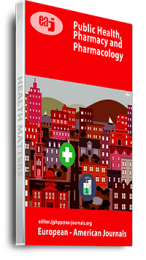This study evaluated the predictability of novel biomarkers (Urine Cystatin C, NGAL and Albumin) in detecting early renal dysfunction. About 140 patients (53 (37.9 %) male and 87 (62.1%) female) who attends ARV clinic at the University’s Teaching Hospital, Port Harcourt were included in the study. The study was designed in 3 phase to include Visit 0, 1 and 2 which lasted for about 12weeks (3months). Visit 1 was 4weeks from visit 0 and Visit 2 was 8 weeks from Visit 1. Laboratory assessment was carried out on samples collected from the patients, Albumin was 0.90±0.56, 1.36±0.89, and 1.36±0.94; Urine Creatinine was 479±1.90, 489.06±445.09 and 514.85±595.55; Urine Total Protein was 15.04±26.73 9.50±5.07 and 6.53±3.84; while NGAL was, 1902.51±902.59, 1941.48±743.60 and 4881.60±2792.01and Cystatin C was 889.70±1201.04, 1062.38±1165.38 and 1577.92±506.61 for Visit 0, 1 and 2 respectively. Significant difference was observed in the measured parameters across all Visits from 1st visit to end of the study. The differences observed between the markers across all visits were significant. Using differential reliability test, NGAL has 241.67% better chance of predicting renal dysfunction compared to Cystatin C, while Cystatin C has 166.67% better chance of predicting renal dysfunction compared to albumin, while NGAL also has 811.1% better chance of predicting renal impairment as compared to albumin. However, creatinine clearance did not pick up renal dysfunction. This study is therefore recommended to Physicians in other to help in diagnosing early renal dysfunction in HIV patients, especially those on tenofovir (TDF) based ARV regime which has been proven to cause renal dysfunction.
Keywords: Biomarkers, Cystatin C and Albumin, HIV, NGAL, Tenofovir

